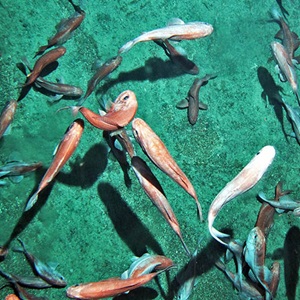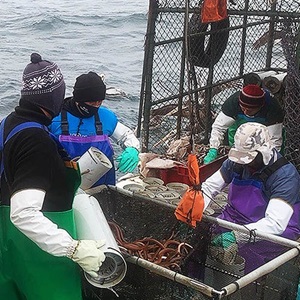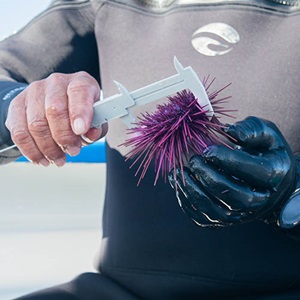The Nicaragua Caribbean spiny lobster fishery aims to improve its sustainability through a census of its members and their fishing operations, to give enhanced insight on their impacts on stocks.
- Improve data on fishing effort
- Better catch data for improved stock assessments
- Enhanced monitoring, control and surveillance of the fleet
- Develop effective Harvest Control Rules
Start date: April 2024
$60,554 USD
Transition Assistance Fund
Awardee
Central American Fisheries (CAF), Nicaraguan Institute of Fisheries and Aquaculture
Fishery
Nicaragua Caribbean spiny lobster trap fishery
Improving performance in data collection
Located on the eastern seaboard of the country, the Nicaragua Caribbean spiny lobster industrial trap fishery is part of the In-Transition to MSC Program. As part of its commitment to sustainability, the fishery underwent an assessment to the MSC Fisheries Standard in 2023. It scored highly for its management, and for minimal impacts to the environment and associated species. However, the assessment highlighted the need for improved performance related to the fishery’s impact on spiny lobster stocks.
The fishery uses traps to catch lobsters in the Caribbean Sea’s main Nicaraguan fishing ports of the Corn Islands and Bluefields, and other fishing communities such as Cayos Perlas, Cabezas, and Miskitos. The fleet accounts for 60% of the total spiny lobster harvest in Nicaraguan waters. It is vital that the impacts of the fleet are clearly established for the sustainability of the stock.
A census to understand impacts
The Nicaraguan Institute of Fisheries and Aquaculture (INPESCA) and Central American Fisheries (CAF) will work with the regional governments and others to create an official census of the artisanal component of the fishery.
The Transition Assistance Fund will be used to hire and train a team to collect data and design the census. It will include data on the artisanal fleet and its personnel, for both trap fishing and divers.
“Getting improved knowledge of the artisanal fleet associated with the Nicaraguan Caribbean spiny lobster stock will allow us to make a better approximation of the total extraction of such species, which will allow us to establish better-informed management decisions around the stock.”
Central American Fisheries
INPESCA will use the census to design a landings reporting tool to determine the fishing effort of the fleet. This will include instructions of the details to be reported, the number of vessels involved, location reports, responsible persons and any indicators that need to be monitored. The tool will be used at processing plants and collection centres across all the spiny lobster fishing ports to ensure that data is consistent.
The reporting tool is scheduled for implementation in 2025-26. Spiny lobster specialist Dr Eloy Sosa is supporting with the identification of and training on a new, robust stock assessment model using the tool’s report. This model will help the guide the fishery toward meeting sustainability requirements.
Related projects

New Zealand orange roughy: Age models and Harvest Control Rules

North Peru eel trap fishery: Improvements in practice and governance
-.tmb-thumb300.jpg?Status=Master&Culture=en&sfvrsn=a0cda56e_1)
Making Kerala’s deep sea shrimp fishing sustainable


